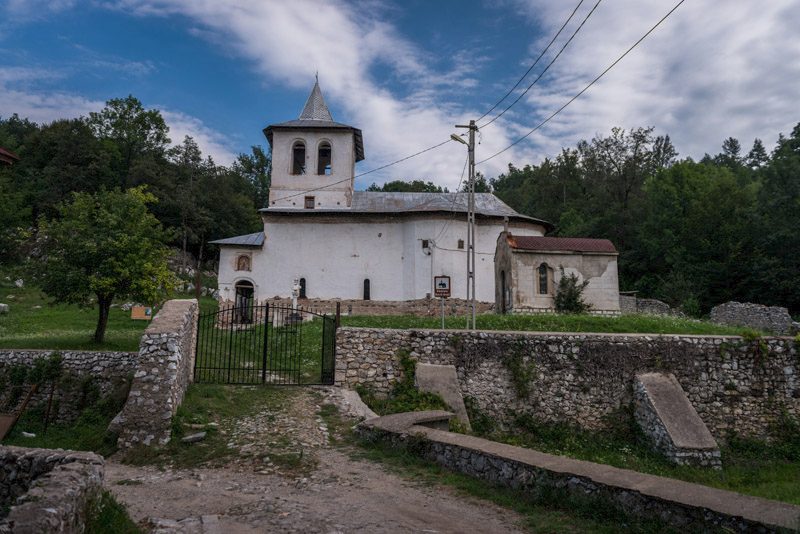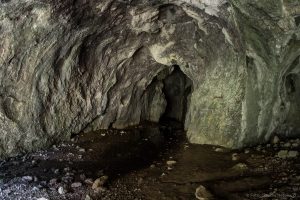

Built at the passing between the centuries XVIIth and XVIIIth, the church of the Monastery Baia de Aramă reflects the stylistic features of the period of cultural – artistic blooming from the period of the reign of Matei Basarab (1632 – 1654), being recorded in an artistic current in which the architecture of Wallachia evolves towards new directions and vision of the Brâncovenesc period.
According to the local traditions, the old monastic establishment (initially it was a monastery of monks) dates even from around the years 1400, from the period of Saint Nicodim from Tismana. A document from 1672 mentions the Father Superior of the monastery with the name of Evghenie from the Monastery Hilandar from the Mountain Athos.
In the place of the wooden church there is built up, however, the current construction only by the end of the XVIIth century, during the times of the Father Superior Constantin Brâncoveanu who, between the 9th and the 12th of June 1695, being in passing from Cerneți towards Tismana, agrees and supports the building up of a place of worship (the prince offers 300 plates for the use of building the church).
The real founders can be considered Milco Băiașul, bailiff of the miners from the locality, Serbian of origin, who asked the prince to be put the foundation stone of the new church for the memorial of his son, Milco, as well as the Great Ban of Craiova, Cornea Brăiloiu, relative of Constantin Brâncoveanu, who will support the work in the name of the prince.
Because of the Turkish incursions, the construction starts only later, on the 22nd of May 1699 and ends at the 7th of May 1703, when takes place the consecration of the church. The proper building up lasts however only one year, because of the fact that the painter, a so-called Ivan, signs himself in the painted exterior in the year 1700. Around this year there also takes place the painting decoration of the place of worship, by the renowned painter Neagoe and the hieromonarch Partenie from Tismana.
The church is built up from bricks and pieces of cinder from the smelting houses of the copper mines. The surrounding wall dates back probably from the same period with the church, being original from the stone from the mountain connected with mortar of calcium oxide, mixed with land.
The monastery started its activity even from the year 1703. Functioning as a skete, the establishment has been further on (before the year 1718) dedicated to the Monastery Hilandar from the Mountain Athos.
From the entire skete there was only kept the priorship, which became after the secularization the house of the priest and the church which became of secular. The wall sanctums which occupied the part from the hill of the premise of the monastery were demolished throughout the time. In the year 1890 there were still people living in them.
In the meeting of the Metropolitan Assembly of the Metropolitan Church of Oltenia starting with the date of the 29th of January 2008 there was approved the re-foundation of the Monastery of the Holy Voivodes from the city Baia de Aramă, as a monastery of nuns under the jurisdiction of the Episcopacy of Severin and of Strehaia, and having as lady superior the nun Isidora Rusu, following to function with the Residence of Baia de Aramă. Starting with the year 2011 there was chosen as lady superior of the monastery the nun Mihaela Păiuș.


